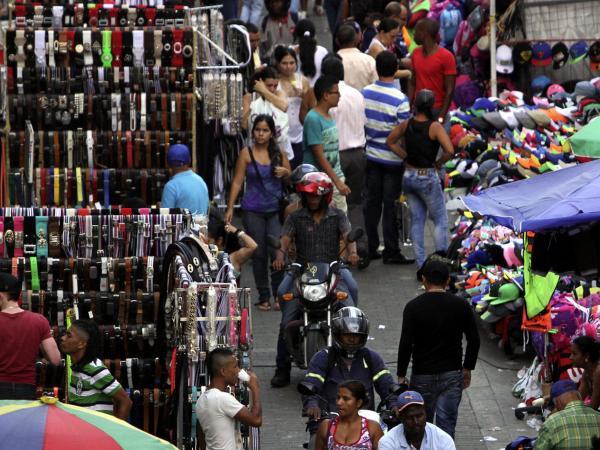The informality figures presented a new positive report, since for the moving quarter between the months of December 2021 and February 2022 one was given correction of 3.7 percentage points in the case of the national totaland 3.9 points for the 13 main capitals of the country.
(Intra-regional trade, a priority for economic reactivation).
This was announced by the National Administrative Department of Statistics (Dane) in its latest measurement of informal employment and social security, where it highlighted that the proportion of informal workers in the main capitals of the country increased from 47.2% in the same period. from last year to 43.3%.
According to figures from the statistical entity, the labor market reports 9.93 million workers in cities, of which 5.63 million are formal and 4.2 million are informal.
(Informality reached 44.6% between December 2021 and February 2022).
In addition, informality was also reduced at the national level, from 48.3% between December 2020 and February to 44.6%. At the national level, there are 11.01 million workers, 6.1 million are formal, and 4.91 million.
Between Bogotá, Medellín, Cali, Barranquilla, Bucaramanga, Manizales, Pasto, Pereira, Cúcuta, Ibagué, Montería, Cartagena and Villavicencio are found 90% of the workers, and likewise, the main cities are those that group 87% of informal workers.
Regarding the geographical domains, the cities that presented the highest proportion of informality during the reference period were: Sincelejo (65.5%), Cúcuta (65.0%) and Riohacha (63.7%). On the contrary, the cities with the lowest proportion of informality were: Bogotá DC (33.1%), Manizales (39.0%) and Medellín (40.5%).
Informality by sex.
Although the figures of the labor market in terms of employment show a greater male participation, they are also the ones who face the highest figures of informality. In the case of the 13 cities and metropolitan areas, the proportion of employed men who were informal was 43.7% for the period, with 5.5 million workers, of which 3.1 million have a formal job, and 2.4 million in the informal sector.
In the case of women in the main cities, the proportion of informality was 42.7%, with a total of 4.4 million female workers. Among them, 2.53 million are formal and 1.89 million informal. In the same moving quarter of the previous year, the proportion of informal workers for men and women was 48.0% and 46.2%, respectively.
YOUTH MARKET
Another report that Dane delivered yesterday was the one on the youth labor market, which presents information for the young population between 15 and 28 years of age. According to the bulletin, the occupancy rate for the total number of people in that age range was 43.8%, above the rate recorded last year, at 42.5%, an improvement of 1.3 percentage points.
Regarding the unemployment rate of the young population, this also showed a significant recovery in the reference quarter, as it stood at 21.1%, a reduction of 3.1 percentage points compared to the months of December 2020 – February 2021, when youth unemployment was at 24.2%.
The record of the young population in the labor market for the quarter was 4.9 million employed young people, while there was a total of 1.33 million unemployed in this age range and 5.08 million outside the labor force .
Another of the data that Dane highlights is that of young people between 15 and 28 years of age who do not study, but are not employed either. For the quarter, the total population in this age range in this condition amounted to 3.26 million people. As highlighted by Dane, this represented 28.6% of people of working age for that age range; By sex, this relationship for men was 9.7% and for women it was 18.9%.
“This is one of the most worrying indicators,” said Iván Jaramillo, a researcher at the Labor Observatory of the Universidad del Rosario. “Unfortunately, although the recovery of employability levels is beginning to align with pre-pandemic levels, for especially vulnerable groups such as young people, the crisis seems to have affected it much more deeply and severely,” explains the expert.
According to Jaramillo, the recovery in the situation of young people is slower, because also “due to the pandemic, many abandoned their school spaces, and those training processes were interrupted and that is why they are reflected in those figures.”
By branches of activity, in the quarter, the one that registered the highest number of employed persons was Commerce and vehicle repair (19.6%), with 1.01 million young people working in these activities, followed by agriculture, livestock, hunting, forestry and fishing (14.6%), with 810,000 jobs.
On the contrary, among the groups of activity that have less weight among the jobs of young people are real estate activities, with 0.5% of youth jobs, for a total of 24,000 jobs. Other sectors with little youth participation are electricity, gas, water supply and waste management, with 39,000 jobs, and mining and quarrying, with 59,000 youth jobs.
Of the total number of youth workers, the positions with the most jobs are private workers or employees, with 2.5 million jobs, followed by self-employed workers, with 1.7 million jobs.
BRIEFCASE







